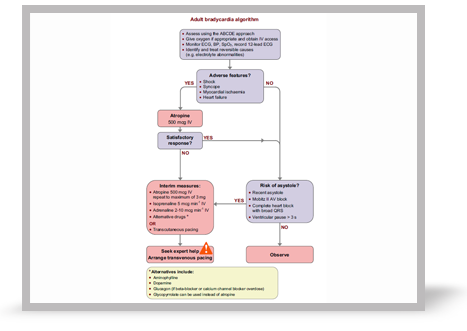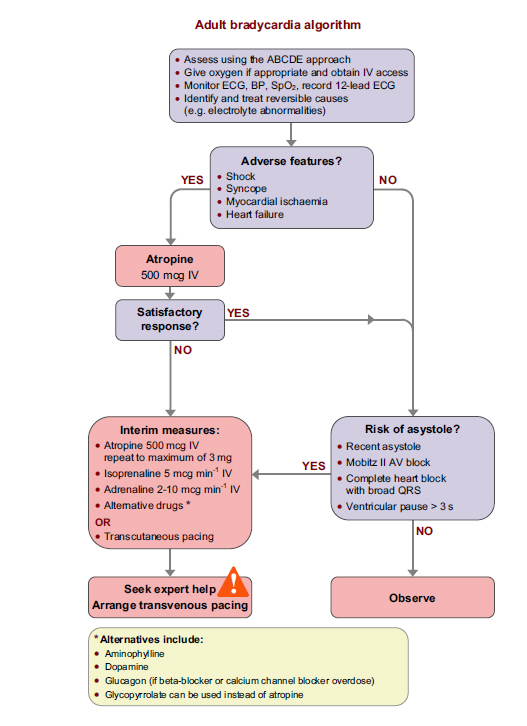
- Summary
You have reached the end of this case study using the bradycardia algorithm. Here is a summary of the key points. Roll over the algorithm to see a larger image.

When using the bradycardia algorithm you should:
- Look for adverse features that indicate the need for atropine
- Assess the risk of asystole
- Assess the response to atropine if used
- Consider percussion pacing if appropriate
- Consider other drugs and transcutaneous pacing as interim measures
- Confirm electrical capture and mechanical response if transcutaneous pacing is used
- Consider the need for expert help at all times
You can read further information about interim measures for bradycardia by selecting the Essentials tab.
See the References tab for information in the ALS manual.
You may also want to revisit the other two topics in this module:
- How to recognise bradycardia
- How to apply the principles of treatment
References
See chapters 8, 10 and 11 of the ALS manual for further reading about bradycardia.
Essentials: Interim measures
Adrenaline - infusion of 2-10 mcg minsup]-1 titrated to response
or - isoprenaline infusion 5 mcg minsup]-1[/sup] as starting dose
or - dopamine infusion 2-5 mcg kgsup]-1[/sup] minsup]-1[/sup]
or – transcutaneous pacing:
- Arrange sedation where necessary.
- Ensure the skin is dry and free from excess hair.
- Apply monitoring leads and electrode pads.
- Select an appropriate pacing rate.
- Turn on the pacemaker.
- Gradually increase the output while observing the patient.
- Observe the ECG for a pacing spike until each spike is followed by a QRS complex (electrical capture).
Confirm electrical capture is associated with mechanical capture by feeling for a pulse.
Algorithm: Adult bradycardia algorithm
The adult bradycardia algorithm from chapter 11 of the ALS manual.

Settings
Font colour
default inverted high contrast high contrast inverted high contrast soft green on blackSample text
text looks like thisTEXT LOOKS LIKE THIS
